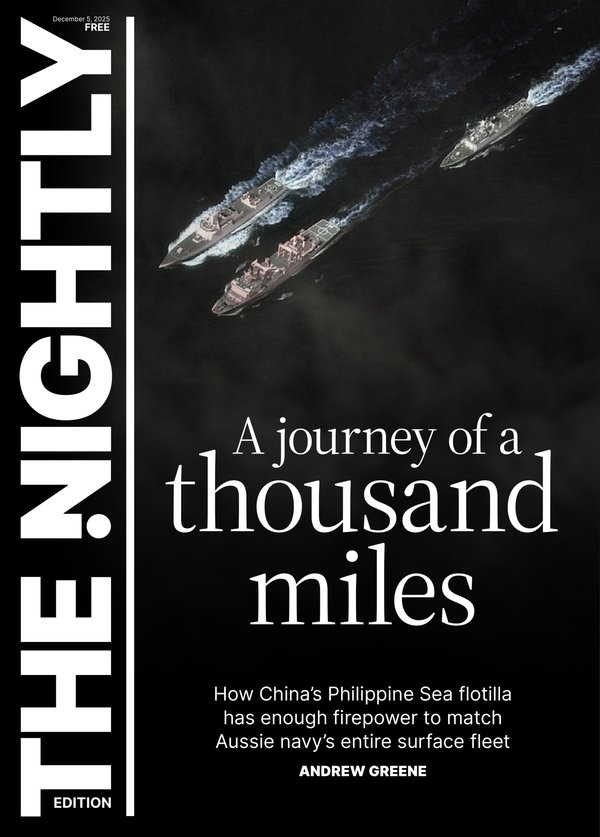Three Australian cities ranked in the top 10 most unaffordable housing markets in the world
In what may be no surprise for many prospective home buyers, three of Australia’s capital cities have been ranked in the top 10 most unaffordable housing markets in the English-speaking world.
Chapman University’s Frontier Centre for Public Policy’s Demographia International Housing Affordability report ranks middle-income housing affordability in markets in eight nations: Australia, Canada, Hong Kong, Ireland, New Zealand, Singapore, United Kingdom and the United States.
Academics from the US-based research centre looked at data from the third quarter of 2023 and ranked a total of 94 cities across all eight countries from least to most affordable.
Sign up to The Nightly's newsletters.
Get the first look at the digital newspaper, curated daily stories and breaking headlines delivered to your inbox.
By continuing you agree to our Terms and Privacy Policy.According to its findings, Sydney was the second-least affordable market in 2023.
Coming in at number 93, it was labelled as “impossibly unaffordable”.
In 15 of the past 16 years, Sydney had the first, second or third least affordable housing of any major market, the report said.
Alongside other markets such as San Francisco, Vancouver, Honolulu and Auckland, house prices relative to household incomes have tripled in Sydney.
The Australian city wasn’t the only one to place in the top 10 for most unaffordable housing, with Melbourne and Adelaide also crowned “impossibly unaffordable”.
Brisbane and Perth managed to secure a “severely unaffordable” rating, ranking 80 and 75 respectively.
Comparing Australia’s least affordable market (Sydney) with its most (Perth), the report highlighted the substantial difference between the two cities, with Perth being at least 50 per cent more affordable than Sydney.
“All five of Australia’s major housing markets have been severely unaffordable since the early 2000s or before,” the report said.
Of the eight nations, Australia ranked equal fifth with the United States for home ownership (66 per cent), while Singapore came out on top (89 per cent).
Hong Kong was ranked the most unaffordable market across all eight nations.
The top four most affordable markets to buy a home were all in the US: Pittsburgh, Rochester and St Louis.
“Coming out of the turbulence of the COVID-19 lockdowns, housing affordability remained severely challenged across most markets in 2023,” Frontier Centre for Public Policy president Peter Holle said.
“In some smaller markets, there have been improvements as remote working continues to accelerate movements to more affordable places. This should flatten or even reduce prices in the highest-cost housing markets as other households seek less costly housing elsewhere.
“There is a genuine need to substantially restore housing affordability in many markets throughout the covered nations.”
House prices in three Australian cities outpacing the rest
Closer to home, new CoreLogic data has revealed house prices in Perth, Brisbane and Adelaide are growing much faster than in cities such as Melbourne and Hobart
Home values nationally have risen by more than 35 per cent since the pandemic kicked off in 2020 but growth has not been spread evenly, according to the real estate data company.
Price growth across hotspots Perth, Brisbane and Adelaide has vastly outpaced gains posted in other urban centres, including Hobart, Melbourne, Canberra, Darwin and Sydney.
At one end of the spectrum, Perth has posted a 62.6 per cent increase in property values in that time, compared with an 11.2 per cent bump in Melbourne.
Digging into the drivers behind the “multi-speed” housing market, CoreLogic head of research Eliza Owen said there were a number of factors at play.
The fastest-growing markets were generally starting from a low price base, with cities such as Perth and Adelaide “still playing catch-up” to other capitals over the past decade, Owen wrote in the report.
Some cities had managed to build more homes than others, which had helped keep a lid on price growth in places such as Melbourne.
Owen said there a stronger take-up of the first-home buyer grant for new homes and the HomeBuilder scheme in Victoria, as well as a property investment boom in the mid-to-late 2010s was responsible for an influx of inner-city apartments.
Interstate migration trends were also playing a role in the multi-speed property market, with softer demand for homes in Sydney and Melbourne as NSW and Victoria lost residents to other states during the pandemic, particularly Queensland.
Owen said there were reasons to expect the variety in price growth across the capital cities to hold at “relatively high levels” over the next few months.
For example, she anticipated the oversupply of homes in pockets of Melbourne and Hobart to be ongoing.
Longer term, the price gap should start to close between different cities, making capitals with slower growth look more affordable.
“This would help to stabilise capital growth trends in the likes of Melbourne, Hobart and Canberra, and possibly draw down the capital growth rate across Perth, Adelaide and Brisbane,” Owen said.
- With AAP
Originally published on 7NEWS
